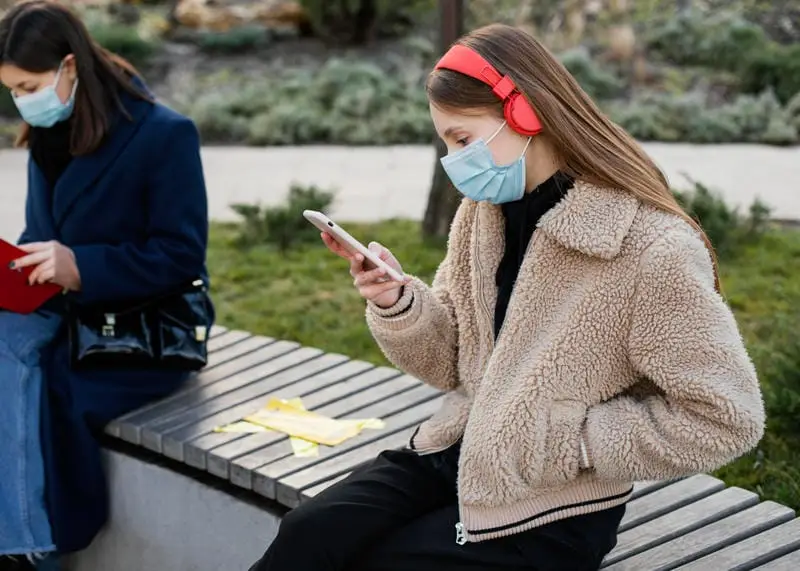- Published on: Jul 17, 2020
- 2 minute read
- By: Dr Rajan Choudhary
MRNA Vaccine Against SARS CoV2
An mRNA Vaccine against SARS CoV2
We have previously discussed vaccines against SARS-CoV-2, the virus responsible for COVID-19. On the 14th of July, a preliminary study was published in the New England Journal of Medicine, an internationally reputable medical journal. This study looks at mRNA vaccines in Phase 1 human clinical trials, a first for the virus. Here we will discuss what this means and the results of the study.
mRNA vaccine
Vaccines target the immune system’s memory by presenting them with pieces of these infective diseases. The small amounts do not cause any infective symptoms, but if the person is infected later in life their body will mount a quicker response and prevent them from falling ill. These vaccines can contain broken up parts of the organisms, “dead” organisms or “live” versions that have been severely weakened so they cannot cause any harm.
In 2018 a new type of vaccine was described. Instead of using pre-made protein markers that identify infectious organisms, mRNA vaccines contain genetic material with instructions to produce these markers. Once injected, the person’s cells use these instructions to produce copies of these protein markers. These markers are displayed on the surface of the cell, which in turn is recognized by the immune system, initiating an immune response and producing protective antibodies.
BENEFITS
A major advantage of RNA vaccines is the ease by which they can be made in a laboratory from a DNA template. During a pandemic, this would result in a rapid response and vaccine against a new disease. Conventional vaccines require the use of chicken eggs or cells to produce the vaccines, which can be expensive and time-consuming. These vaccines can be delivered via injections into the skin, blood, muscle, or organs, needle-free into the skin, or via nasal spray. Because these vaccines are so new, we still do not know the best way to deliver it.
Because these vaccines are not made with parts of infective organisms or from live organisms, they are not infectious and will not cause harm through a strong immune response to the vaccine itself, or by causing the disease they aim to vaccinate against. They also appear to be very efficient at generating a reliable immune response to produce antibodies and are well tolerated with few side effects.
NEEDS IMPROVEMENT
Because these types of vaccines are so new there is still a lot we do not understand about them. They may cause unintended effects that we have not yet encountered in human clinical studies. These vaccines also need to be frozen or refrigerated, and so would not be suitable for countries with limited or no refrigeration facilities.
COVID
The SARS-CoV-2 mRNA vaccine codes for one of the virus’ surface spike proteins, responsible for recognizing target cells and fusing the virus into the cell for entry and infection. It was previously recognized as a target for the SARS and MERS viruses.
45 participants received 2 intramuscular injections 28 days apart. None of the participants had any serious side effects after the first injection, or any side effects significant enough to stop the trial. Many had minor to moderate side effects after their second injection (such as fatigue, chills, headache, myalgia, and pain at the injection site), and half the participants taking high dose vaccines had febrile side effects. Overall the side effects were rated as acceptable.
Prior to the vaccine trials, none of the participants had any antibodies against COVID, or any capacity to stop a COIVD infection. After the injections, all participants had noticeable increases in antibodies produced, measurable in their blood. After 43 days, the participant's blood had enough antibodies to reduce infection by SARS-CoV-2 by over 80%.
What is the takeaway? The vaccine is capable of producing an adequate response to protect the vaccine recipient without eliciting any major side effects. These results will be used in phase 2 clinical trials (enrolment began in May) and a phase 3 trial in July 2020. Essentially this means further human trials to further look for side effects in a larger number of volunteers with a more diverse health profile.
This represents an interesting development in producing a rapid vaccine against a new virus responsible for a world-changing pandemic. This new type of vaccine may be the future of vaccines for a broader range of viruses, bacteria, and even cancers.









